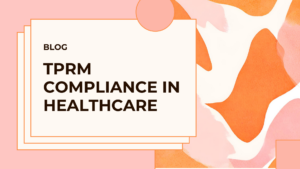Why Papaya?
It’s frustrating that companies and enterprises that want to implement information security programs can’t find a reliable and robust solution. Papaya aims to solve this. It was founded by a group of cybersecurity experts to provide solutions to help organizations protect their intellectual property and sensitive customer data. We developed a solution based on straightforward, easy-to-answer questions that yield information that can be used to enhance business security and compliance.
Papaya and the NIST CSF
Papaya customizes the NIST CSF for your organization with custom controls and guidance. Studies show that the location of data-storing technologies affects the severity of a data breach. Papaya works for businesses of any size and includes a risk analysis of all threats, including how likely they are to happen and how bad they could be. Papaya provides an easy-to-digest framework for security and compliance and creates business-specific controls based on your input.
What is the NIST CSF
NIST brought together different groups of people to work on a cybersecurity framework to help organizations manage their cybersecurity risk. The NIST Cybersecurity Framework combines best practices and industry standards to help organizations handle their cybersecurity risks. It helps organizations understand cybersecurity risks, reduce them, respond to cybersecurity incidents, and get back on their feet after they happen. It also helps organizations figure out what’s going wrong and how to fix it.
Papaya and other frameworks
Papaya is a Security Framework and Regulatory Standards solution that seeks to stay at the forefront of today’s constantly changing IT and cybersecurity landscape. It’s designed to align with all major standards.
ISO 27001
A standard that is known all over the world and sets out the policies, processes, and procedures that an organization needs to make sure its information is secure. This international standard addresses many aspects of data security, including information classification, encryption, and access control.
HIPAA Security Rule
To protect a patient’s electronically stored protected health information, anyone that stores or processes it must use appropriate administrative, physical, and technical safeguards to ensure the confidentiality, integrity, and security of the information.
PCI-DSS
The Payment Application Data Security Standard (PA-DSS) is the most widely recognized standard to help software vendors develop secure payment applications for credit card transactions. The standard has been created by organizations such as the PCI Security Standards Council, Visa, MasterCard, and PayPal.
SOC2
The Service Organization Control 2 (SOC 2) standard is a set of requirements that must be met by service organizations to maintain the confidentiality, integrity, and availability of their clients’ sensitive information. The Trust Services Criteria, which include security, privacy, lawfulness, integrity, and accountability, are the basis for the standard.
The Papaya Risk Management Approach
To improve information security, the Papaya model takes care of risks by analysing a number of factors that affect their effects.
Papaya Risk and Impact Determinants
Business Details
Papaya identifies risks depending on personnel count. More employees increase the risks and threats. These can be internal—a dissatisfied employee or user error—or external—phishing or social engineering. More staff means more hardware, software, data, and accounts to safeguard.
Business Activities
These are the activities that your company performs as part of its usual operations that have an impact on risk. Activities such as accepting electronic payments and keeping PHI data necessitate stringent security safeguards.
Business Physical Environment
The term “Business Physical Environment” refers to the physical setting in which business activities take place. These characteristics include the presence of telework, multiple offices, and shared workspaces, among other things.
Data Residency and Customer Location
Data residency is the legal term for a company’s location where its data is stored. It defines where a company stores its data and where a user is physically located when it comes to accessing that data. To protect their company, companies must make sure their data is secure and remains on-site. This can be a critical concern for companies to ensure the safety of their data and intellectual property.
Technologies
Servers, cloud technologies, smart devices, and the like are all examples of the types of technology that fall under this category.
Papaya’s Areas of Focus
Asset Management
By identifying, evaluating, and controlling assets in the right way, organizations can make sure they are used and protected in the right way. Organizations must consider the risks involved with their assets and take measures to monitor and protect them.
Human resource security
Protection of human resources and preventing illegal access, use, disclosure, or destruction of an organization’s human resources. It also involves thorough background checks and implementing policies and procedures to detect and prevent unauthorized access quickly and promptly.
Training and awareness
A security program can’t work without a program to teach people about security and make them aware of it. A well-designed security training program teaches employees basic security concepts, how to spot potential threats, how to report suspicious activity, and other preventive measures like patch management and strong passwords.
System Lifecycle and Configuration Management (SLM)
Organizations must track and coordinate all system configuration changes. Configuration management identifies, controls, and monitors system changes. System lifecycle management and configuration management are often used together to ensure that changes to systems are made in a controlled and coordinated manner.
Network Security
Protecting your computer networks and connected devices from theft or unauthorized access falls under the purview of network security. Understanding the risks and taking precautions to protect your networks can help ensure that your data and systems are safe from unauthorized access or theft.
Anomalies, Events, and Monitoring
Monitoring anomalies and similar events is vital to detecting threats and mitigating them. Organizations can lower the risk of a security incident by noticing and responding to anomalies and events. Vulnerabilities can be exploited to gain access to sensitive data, so organizations must identify and mitigate as many as possible.
Vulnerability Management
Identification, classification, remediation, and mitigation of vulnerabilities are all parts of vulnerability management. When classifying a vulnerability, organizations must consider its potential impact.
Data Security and Prevention
A layered approach to data security uses multiple security controls to create a comprehensive security posture. Physical security controls protect your data from physical threats, logical security controls protect your data from logical threats, and administrative security controls protect your data from human error.
Access and credential management
Managing user identity and access to systems and data is a complex challenge and requires a comprehensive approach. Authentication, authorization, provisioning, and deprovisioning are all part of the process of ensuring that only authorized users can gain access to systems and data. Centralized and prompt provisioning and shutdowns are used to monitor user activity for compliance and security.
Risk management
A well-planned risk management program can assist your company in avoiding financial losses and other damages. By identifying potential risks and implementing controls, you can help safeguard your organization against financial loss and other damages.
Third-party management
Although third-party vendors are important, they can often pose risks for business owners. A third-party risk management program can help you identify, assess, and mitigate risks associated with these relationships. This includes auditing financial reports, evaluating compliance with laws and regulations, and monitoring cybersecurity practices.
Incident Management
Incident Management provides a roadmap for how to respond to a security incident, and can help limit the damage caused by an attack. It deals with identifying a security incident, containing it, and eradicating it before it does irreparable damage.
Business Continuity and Resiliency
A business continuity and resiliency plan identifies crucial business operations and procedures, assesses risk, and creates a business continuity plan. The best chance for you and your company to survive a disaster is to take the time to create a thorough business continuity and disaster recovery plan.
Physical Security Management
Physical security is a key component in any information security program, and businesses should take steps to protect their data. By mastering a few simple concepts, businesses can make it more difficult for attackers to gain access to their systems and data.
Conclusion
Papaya has a framework for security and compliance that is easy to understand. It adheres to the NIST Cybersecurity Framework to enhance your enterprise security. Papaya works for businesses of any size and includes a risk analysis of all threats, including how likely they are to happen and how bad they could be. To improve information security, the Papaya model takes care of risks by analyzing several factors that affect information security. With Papaya’s security framework, your company will never have to worry about cybersecurity threats.




